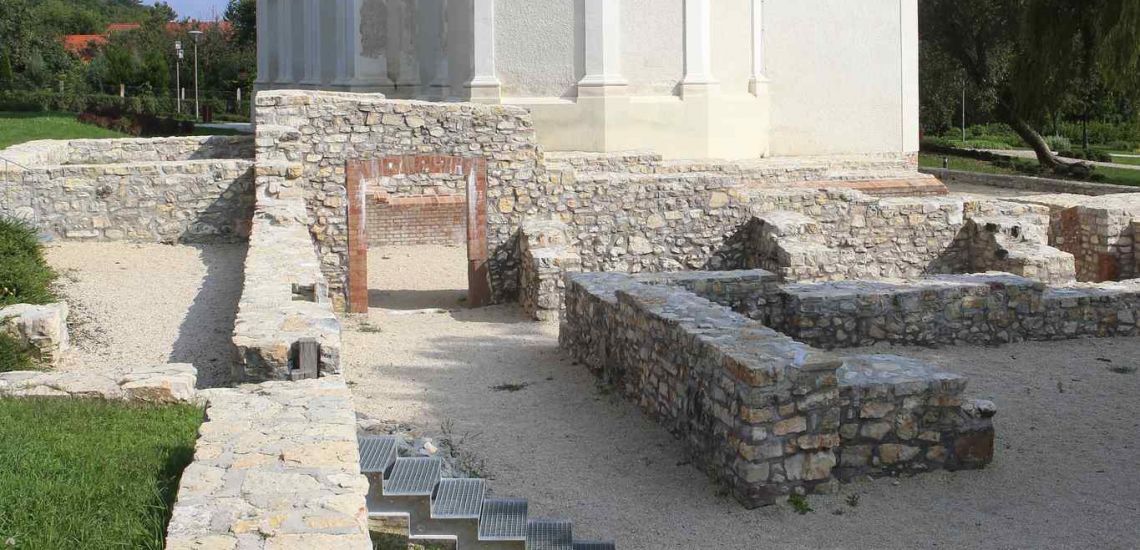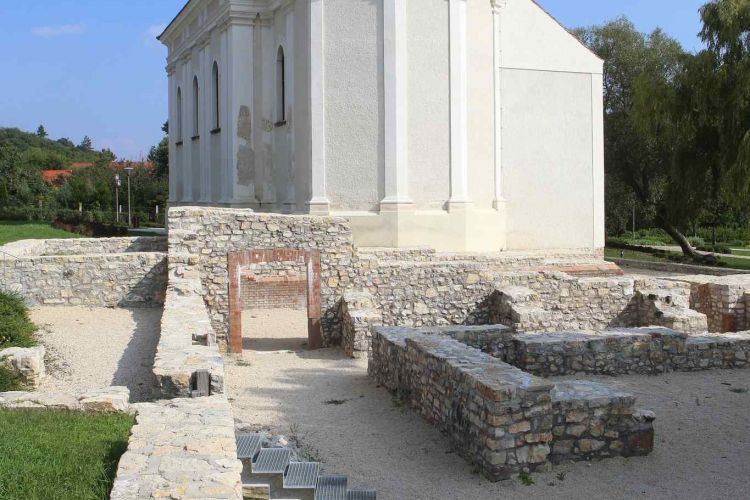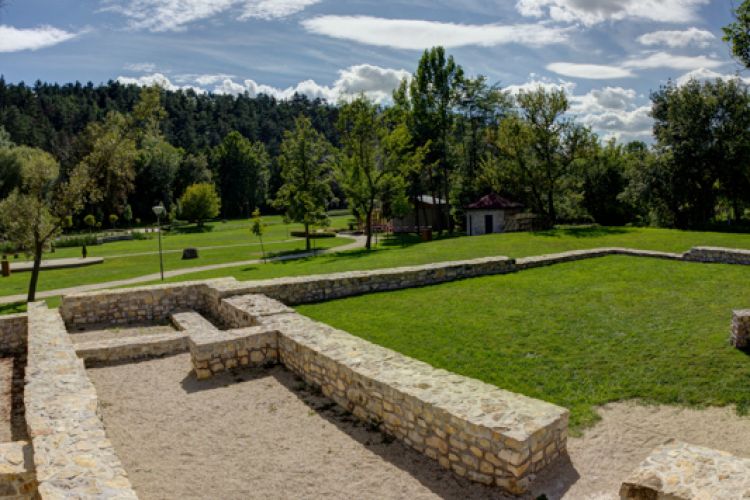
It is one of the earliest nunneries in Hungary. Its original foundation charter written in Greek is King St Stephen’s only authentic document which was left to us in the form of Kálmán Könyves’s transcript from 1109. It is also the oldest charter in the Hungarian National Archives. Although the document does not describe the circumstances of the foundation in detail, it is most likely that the nunnery was founded by King St Stephen I with the purpose of providing a place for the education for his sons’s Emeric’s Byzantine fiancée some time after1010. The Byzantine (Greek orthodox) nuns, who accompanied the princess, were replaced by Benedictine nuns in the 12th century and later by Cistercian ones after 1240.
A large rectangular building, the reconstructed brick arch of which is still be visible today, also belonged to the Árpád Age buildings of the nunnery. The early church used to stand on the Séd Brook side of today’s Jesuit Church. In the 14th century, the crypt of a highly ranked ecclesiastical or secular dignitary stood beneath the side chapel. The fragments of the frescoes of the chapel suggest the chapel was richly decorated once, and most probably they depict St Emeric and the Virgin Mary as well.
The earlier chapel got dismantled in the 14th century and a larger church was erected on the site in Gothic style, most of which can be found underneath the Jesuit Church today. According to the construction contract dating from 1387, a new two-storey building was erected here with a heated dining room, a ward for the sick and an arched dormitory.
The last significant reconstruction took place around 1500 when the Renaissance window and door frames were installed into the new buildings. The tenants of the nunnery fled from the looming Turkish attacks to Körmend in 1543.
Legend has it the coronation gown was crafted here, and Queen Gisela and her maids of honour are supposed have worked on it. This valuable item of clothing was originally a chasuble which got transformed into a gown in the 12th century. As designated by the inscription of the gown, Queen Gisela was involved with the history of the chasuble as commissioner and donor as well. The coronation gown was last used in December 1916 for the coronation of the last Hungarian king, Charles IV (and his wife Zita) in Buda Castle. From 1945 it was safeguarded abroad for 33 years, furthermore it was held as a deposit alongside the Holy Crown and the crown jewels, and it was returned to Hungary in 1978. It has been displayed in the Hungarian National Museum since.


